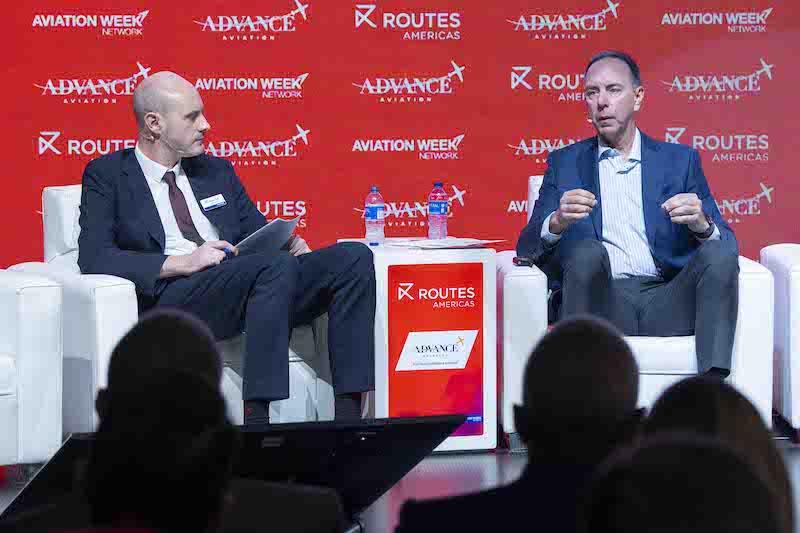IATA’s Cerda: Latin American Airlines’ Traffic Rebound Has Not Translated To Profits

IATA's Peter Cerda (right) speaks on stage with Routes Editor-in-Chief David Casey at Routes Americas 2024 in Bogotá.
Credit: Ocean Driven Media
BOGOTA—Even as Latin American passenger traffic continues to rebound strongly from the COVID-19 pandemic, the region’s airlines are struggling financially, said Peter Cerda, IATA's regional vice president for the Americas. During a fireside chat at the Routes Americas 2024 conference here in Bogotá...
Subscription Required
This content requires a subscription to one of the Aviation Week Intelligence Network (AWIN) bundles.
Schedule a demo today to find out how you can access this content and similar content related to your area of the global aviation industry.
Already an AWIN subscriber? Login
Did you know? Aviation Week has won top honors multiple times in the Jesse H. Neal National Business Journalism Awards, the business-to-business media equivalent of the Pulitzer Prizes.





